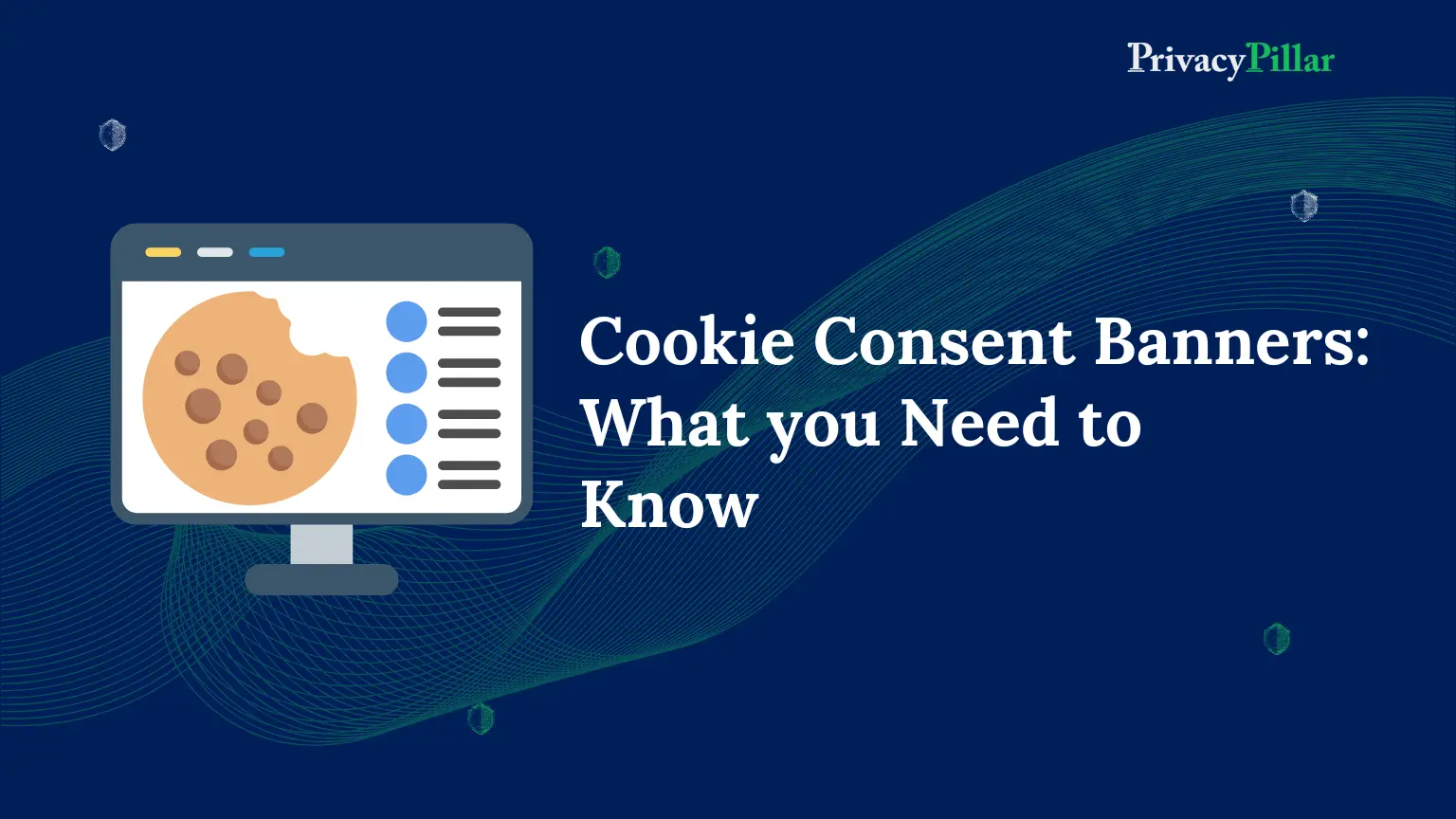
Data Privacy Issues: How Your Every Move is Being Tracked
Prioritizing data privacy should be paramount as you steer your business toward growth and innovation in a radically changing digital landscape.
Safeguarding private user data from third-party access, usage, and distribution is crucial for protecting customers and employees, securing business operations, and maintaining your brand’s reputation, all of which are integral to expansion in the modern business world.
Most likely, your business encounters data privacy concerns daily, particularly when employees use the internet, potentially putting your company’s information at risk.
Data privacy: Significant challenges and complexities.
Privacy and security professionals are responsible for categorizing data based on its risk level and implementing suitable data privacy technologies and strategies to safeguard sensitive and personally identifiable information (PII) effectively.
Significant fines may be imposed for breaking the GDPR, CCPA/CPRA, CPA, and other laws, including HIPAA, GLBA or COPPA.
Additionally, damaging your reputation can threaten your business and create a career-limiting blemish on an IT manager’s resume.
The following article will review the most vulnerable data types, study data privacy concerns, and analyze solutions to resolve these problems and strengthen your businesses’ privacy program.
Which type of data is at the most risk?
Privacy breaches can encompass various company information.
While account credentials like usernames and passwords are often the first concerns in data privacy concerns, several other details are also at risk of being accessed, stolen, or sold.
These include:
1. Online purchase history
2. Search engine and browser histories
3. Location information
4. Financial data
5. Employee benefits service providers include insurance companies, health savings account administrators, and retirement account platforms.
Malicious third parties may target and infiltrate your organization’s data and documents created, accessed, stored, or shared.
Your private information is in danger from unauthorized access like these, which might result in data loss, harm to your reputation, and possibly legal penalties.
10 Most Common Data Privacy Issues
Over the past decade, data has been instrumental in driving significant advancements and breakthrough technologies.
However, safeguarding consumer data privacy and preferences has become a pressing challenge in the present times.
To understand the implications and seek solutions for data privacy and significant data privacy issues, you must recognize your organization’s major obstacles in ensuring data privacy and protection.
- Access Control is a Challenge
Access control presents a significant challenge in data management.
When devising a data management plan for businesses, it’s crucial to contemplate both the individuals with access to the data and the intended utilization of that data.
Merely defining access permissions is insufficient; strict adherence to these rules is essential.
For individuals, controlling access to personal data can be complex.
Unlike businesses, individuals cannot selectively choose who receives their information.
Malicious actors can gain access to personal devices and data even without explicit permission, making data protection a tricky task.
- Data Trading
Data trading poses a significant threat to data privacy in the digital realm, and it is crucial to address this issue when developing your company’s data privacy strategy.
Data trading encompasses various practices, including third-party access and theft of confidential information, selling this data to other third parties, and the continuous resale of data until leaks are addressed.
Protecting your sensitive information from unauthorized access and potential resale to third parties should constitute a central element of your data privacy strategy.
The reason for this emphasis is that once data traders gain access to your company’s or customers’ data, they can engage in a range of potentially harmful activities, such as:
- Identity theft: By obtaining enough confidential customer data, hackers can impersonate your business or customers online, leading to fraudulent activities such as unauthorized financial transfers, loan applications using your federal tax ID number, or unauthorized purchases.
- Data hostage: In extreme cases, data traders may hold your data hostage and demand a high ransom.
While waiting for your response, they may entertain offers from other bidders, increasing the situation’s urgency.
- Targeted advertising: Data traders can sell your data to advertising companies, enabling them to create personalized ads based on your shopping habits, digital shopping lists, and search engine results.
- Location Tracking
Location tracking poses a significant threat in the business sector, as hackers can exploit it to access sensitive information.
This data breach could expose trade secrets, confidential consumer data, supply chain information, and business development strategies.
Let’s consider a scenario where data traders obtain an employee’s location data from their smartphone, mainly if they use a company car for business purposes.
By analyzing patterns in this location data, third parties can uncover valuable insights such as primary material suppliers, consulting partners, retail clients, individual customers, and even company vehicle storage locations outside business hours.
Such information can be sold to data traders or offered to competitors, putting your business operations at risk.
Even if just one employee’s location data is compromised, hackers can cause considerable damage.
- Exponential Growth of Data
The expansion of data is experiencing exponential growth, surpassing previous rates.
Every passing moment contributes to generating over 1.7 megabytes of fresh data, posing a significant obstacle for organizations as they strive to ensure the security of not just their customers’ details but also confidential information.
Disturbingly, the Breach Level Index, a public tracking site for data breaches, reports a staggering 9,198,580,293 lost or stolen data records since 2013.
Over the past decade, data has seen an unprecedented surge, but unfortunately, inadequate security practices persist, leaving organizations vulnerable to data breaches.
Among the significant concerns in data privacy is the protection of Personal Identifiable Information (PII).
The sheer veracity and volume of data in our technology-driven world have made it overwhelming to handle the millions and, in some cases, billions of data records involved.
- Insufficient Data Privacy Plans
Insufficient data privacy plans can pose significant challenges for businesses, especially in the face of the ever-growing volume of digital data.
Approximately two megabytes of new data are generated every second, and any digital or online business activity contributes to this exponential growth.
It is crucial to assess whether your data protection policy and infrastructure are robust enough to handle your business’s increasing data volume generated, stored, and shared.
The probability of encountering data privacy concerns increases as you accumulate more data.
Therefore, each piece of new data should be viewed as a potential vulnerability in your privacy policies.
- Human errors due to lack of Knowledge and Training
Human error introduces a considerable level of complexity to data privacy and protection.
Everyday mistakes made by individuals can have significant implications for data security.
Security analysts say human error represents the most significant challenge in maintaining data privacy and security.
Employees who lack proper knowledge may use weak passwords, accidentally delete data, fall victim to phishing scams, have excessive access privileges, or visit unauthorized websites.
A team of security experts is responsible for developing a comprehensive security awareness and training program, empowering employees to mitigate risks.
Additionally, employing data loss prevention tools can help prevent accidental or malicious leakage of sensitive data by end users.
- Cost of Data Privacy Maintenance
The rise in maintenance expenses comes with the need to ensure system security and prevent data privacy issues at the enterprise level.
While the costs associated with avoiding breaches might be significant, it remains essential to make the required investments.
This is where process automation plays a vital role, offering various benefits:
- Minimizing the number of data silos
- Streamlining operations and eliminating manual processing bottlenecks
- Mitigating the risk of human error
- Increasing opportunities for data de-duplication
- Enhancing governance and control
- Lowering overall costs
- Copyrights and Patents are rendered irrelevant in big data privacy
Copyrights and patents face significant challenges in a big data-driven setting, making their inclusion within organizations painstaking.
Obtaining patents becomes exceedingly difficult due to the sheer scale of big data.
The process of verifying patent uniqueness within vast databases of information is time-consuming and challenging.
Copyrights lose their relevance in a big data environment as data manipulation becomes highly feasible.
This diminishes the royalties of inventing something original, rendering copyrights less effective.
- Inaccuracy in Big Data Analysis
A data privacy concern unique to big data is contrary to popular belief; the analysis it generates is not always as accurate as expected.
While big data insights can be powerful, they can also be flawed, contributing to the privacy issues previously mentioned.
Inaccurate big data analysis is often due to flawed algorithms, incorrect models, and misplaced individual data.
Such inaccurate analyses lack data validation and can have direct negative consequences for consumers, leading to job losses, false misdiagnoses, and denial of essential services.
Moreover, organizations relying on faulty big data analysis risk facing numerous failures, potentially leading to their closure.
Blindly trusting flawed big data analyses can send them down a rabbit hole of problems and setbacks.
- Increase in the number of devices.
The increasing number of devices, such as the Internet of Things (IoT) devices, bring-your-own-device (BYOD) policies, and the widespread use of internet-connected tablets, phones, and watches, poses challenges in handling data privacy.
As more devices are introduced into the workplace, the data to be managed grows significantly.
To address this complexity, your organization must handle compliance and data privacy effectively from various sources, diverse operating systems, and multiple applications.
The key to resolving this issue is to establish appropriate data governance procedures.
Establishing appropriate data governance measures will empower your organization to proficiently oversee data privacy, irrespective of data origins and the devices employed for its access.
How to Safeguard Your Data
If you are concerned about data privacy and wish to enhance it, there are several solutions you can implement, some of which we have briefly discussed:
1. Strengthen data privacy strategies
Review your existing protocols and software, identify gaps in coverage, and establish a scalable system to protect your digital assets as data volumes grow.
2. Monitor data sharing
Minimize the likelihood of third-party access to your data by considering software-based solutions and internal protocols that limit data trading.
3. Disable location tracking
Prevent data leaks and unauthorized access from competitors by disabling location services on company devices across the board.
4. Limit device access
Control data access by reducing the number of devices with such permissions and restricting employee access to company assets through personal devices.
5. Develop comprehensive SOPs
Identify vulnerabilities in your internal procedures, create new Standard Operating Procedures (SOPs), and ensure employees are trained to follow them diligently.
6. Avoid data hoarding
Regularly purge outdated digital documents and, when necessary, opt for secure hard copies in storage to prevent unnecessary accumulation of sensitive data.
7. Use Incognito Mode
Most web browsers come with an Incognito Mode or private browsing function that you may utilize whenever you need to access the internet while carrying sensitive data.
This helps prevent unauthorized individuals from accessing your data through your device’s browsing history or cookies.
8. Employ Password Managers
Employ password managers to keep track of your online passwords securely.
These tools make managing multiple passwords more efficient and ensure your passwords’ security and encryption.
By employing a password manager, you can oversee and regulate access to your online accounts, diminishing the likelihood of unauthorized access and potential data breaches.
Conclusion
As digital technology advances, new avenues for data collection from consumers are constantly emerging.
For example, the Internet of Things links many devices, forming a world where everything is interlinked.
However, this interconnectedness also poses potential risks, such as unauthorized surveillance and security threats.
Both individual consumers and businesses face the critical question of handling data responsibly.
Taking proactive measures is essential for both parties to prevent catastrophic outcomes resulting from malicious agents gaining unauthorized access to sensitive information.
Businesses strive to utilize data for enhancing customer service and boosting revenues, yet it’s imperative for them to equally prioritize security and privacy.
Customers also should be watchful about sharing their sensitive information online and take precautions to shield themselves from potential breaches.
Data privacy is now a need for both customers and businesses in the digital era, not just an afterthought.
Our digital lives now demand it to run correctly and securely as a fundamental requirement.



